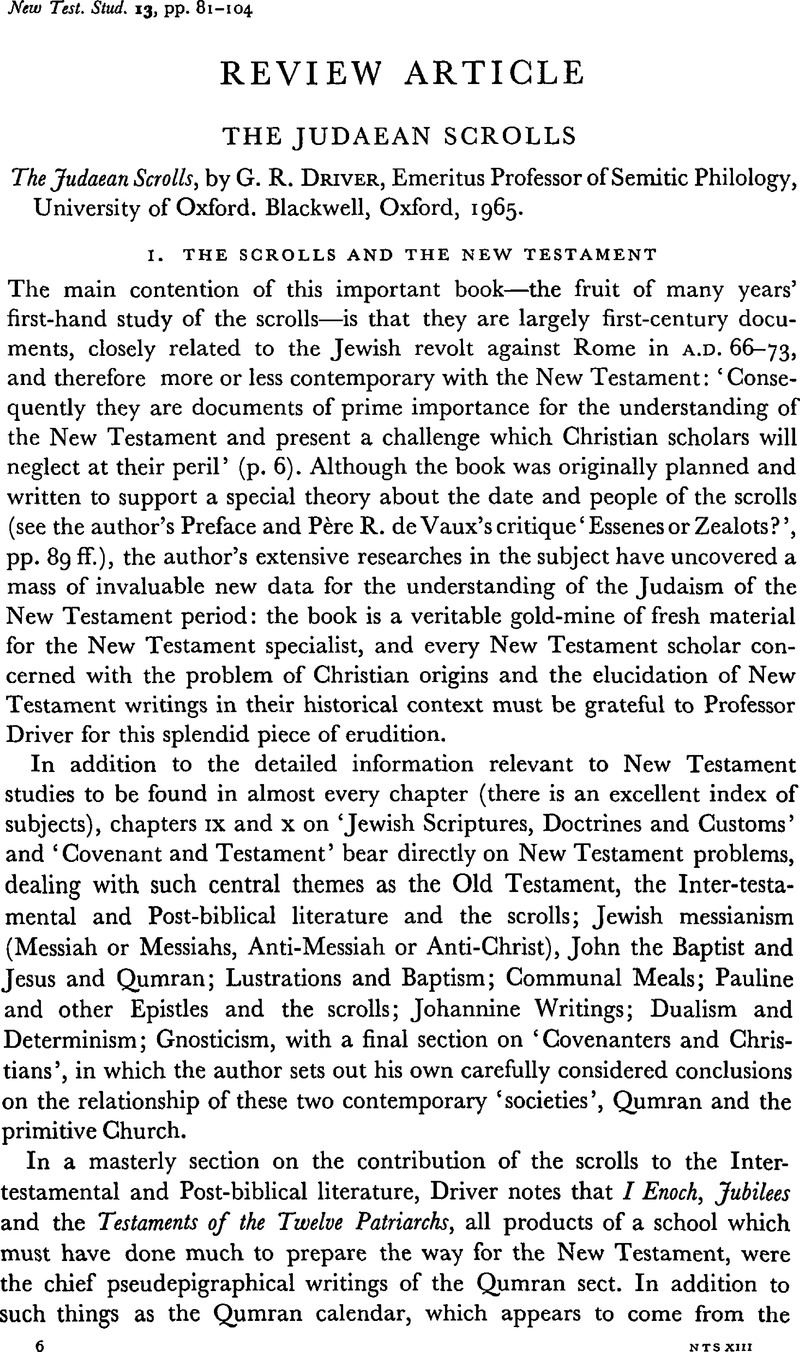Article contents
The Judaean Scrolls. 1. The Judaean Scrolls and the New Testament
Published online by Cambridge University Press: 05 February 2009
Abstract

Information
- Type
- Review Article
- Information
- Copyright
- Copyright © Cambridge University Press 1966
References
1 Driver, , p. 450, and p. 568 where further reference is made to the ‘white raiment’ or ‘white robes’ and the ‘crown of glory’ to which Christians looked forward in a future life.Google Scholar
2 Driver, pp. 460 ff.
1 See Starcky, J. in Revue Biblique, lxx (1963), 481 ff.Google Scholar, and Woude, A. S. van der, Die messianischen Vorstellungen der Gemeinde von Qumran (Groningen, 1957).Google Scholar
2 ‘The true Teacher’ (‘Teacher of righteousness’), a name applied both to the founder of the sect and to its coming high-priestly ‘Anointed One’.
3 See my Wood, Ethel M. Lecture, The Dead Sea Scrolls and Christian Doctrine (London, 1966).Google Scholar
4 Ibid. p. 20.
1 See Jonge, M. de and Woude, A. S. van der, ‘IIQ Melchizedek and the New Testament’, N. T.S xii, 301 ff.Google Scholar; David, Flusser, ‘Melchizedek and the Son of Man’, Christian News from Israel, vol. xvii, no. 1 (April 1966).Google Scholar
2 See further below, p. 88.
1 For an excellent discussion of this and related topics, see Flusser, D., ‘The Dead Sea Sect and pre-Pauline Christianity’, in Scripta Hierosolymitana, vol. iv, Aspects of the Dead Sea Scrolls, 2nd ed. (Jerusalem, 1965), pp. 246 ff. See further below, p. 87.Google Scholar
1 Cf. above, p. 84, n. 1.
1 See Repo, Eero, Der Weg als Selbstbezeichnung des Urchristentums: Eine traditionsgeschichtliche und semasiologische Untersuchung (Helsinki, 1964).Google Scholar
2 See also above, p. 82.
1 The Background of the New Testament and its Eschatology, Studies in Honour of Dodd, C. H. (Cambridge, 1956), p. 169.Google Scholar
1 L'Archéologie et les Manuscrits de la Mer Morte (London, 1961)Google Scholar, which I shall refer to as Archéologie, as Driver does.
1 In the course of his discussion of my conclusions, Driver often speaks of the ‘monastery’ of Qumran: thus in ‘quotes’. I am keeping the ‘quotes’, because I have never used the word when writing about the excavations at Qumran, precisely because it represents an inference which archaeology, taken alone, could not warrant.
- 1
- Cited by

